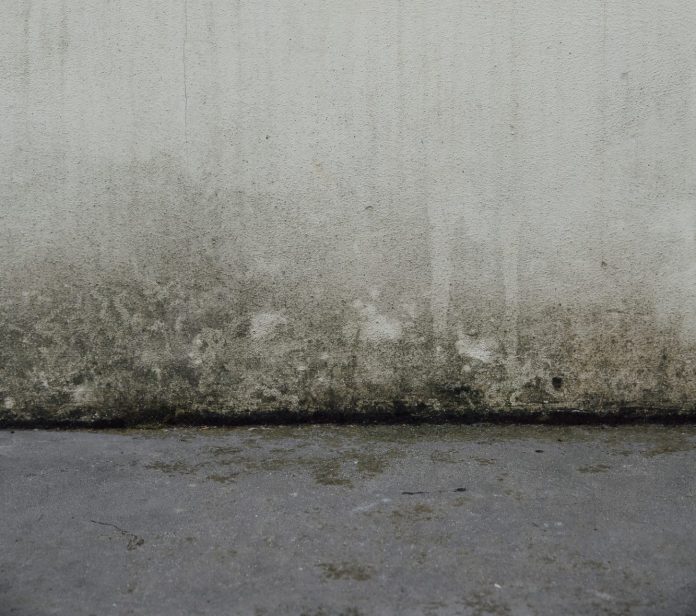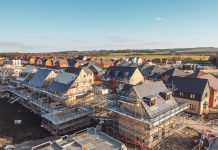David Bly, Managing Director of Cornerstone Management Services Ltd, a company providing independent expert property health surveys, is of the opinion more can be done to mitigate damp and mould
With constant year-on-year damp, condensation, and mould in many homes, it could be argued that there needs to be a ‘reset’ regarding how structures are assessed prior to and after any improvements, and the ‘adequacy’ of internal atmospheric management protocols aligned to uphold a healthy dwelling.
Many residents may not be aware of the impact of some everyday activities on the internal conditions as a whole. With this in mind, guidance in a defined, recognisable manner should be considered when commencing an investigation of a reported problem.
The question of whether landlords are doing enough is noted, but they may well be doing enough within their infrastructure and existing knowledge level. Therefore, they rely on expert trades to deliver the necessary improvement not only in line with regulatory compliance but also in line with a cost-effective expected outcome.
Structural and atmospheric elements
The UK has a myriad of housing stock construction types, periods, and methods; any inspections for reported damp and mould or designated improvements must embrace the structural type, period, age, and orientation, as they can all play an active role in maintaining desired structural health.
With a drive for net zero and many retrofits underway, Cornerstone believes such improvements require a significant baseline understanding of several structural and atmospheric aspects before they can be undertaken.
While fully recognising that many industry experts deal individually with structural and atmospheric elements, in the absence of impact assessments, how do we fully realise that the desired outcome for a healthy internal environment has been achieved?
Did you know the existing permeability of a structure, i.e. its leakiness, is a key recognition prior to any intended improvements as it affects the prevailing atmospheric conditions alongside the resultant internal comfort of occupants? In addition, determining the permeability rating has a direct alignment with the whole dwelling ventilation rate. If we also sought to embrace net zero in the absence of structural and atmospheric understanding, could we witness more problems in the future?
The new legislation requires timely responses to reported issues. There is a strong push to ensure compliance within specified timelines. This requires understanding from everyone involved, including housing staff, surveyors, expert tradespeople, and residents, who should have a better understanding of their property and environmental management.
Better decision-making, armed with a greater understanding of improvement expectations, will reduce annual spending and any re-spend activities.
In our experience, this can only be achieved by rethinking how complaints are recorded, responses are managed, and credible knowledge in a recognised format can be utilised and delivered to residents in a manner of greater understanding for improved conformity.
Understanding damp and mould
With a greater understanding of the root causes (not a single root cause) regarding ‘symptoms’ known as damp, condensation and mould, its pattern, location and maintenance aspects all assist the delivery of a profound solution for a confident long-term outcome. The removal of mould also plays a large role in reducing the potential for its re-emergence. Incorrect solutions will not deal effectively with removing all mould particulates, and they place a greater emphasis on the non-use of bleach products and painting over an outbreak in advance of a defined cause.
“Many residents may not be aware of the impact of some everyday activities on the internal conditions as a whole. With this in mind, guidance in a defined, recognisable manner should be considered when commencing an investigation of a reported problem.”
In addition, it should also be noted that dampness and mould are separate elements and require bespoke approaches; dampness tends to appear as spoiling, blistering, cracking and darkening of surfaces, etc. Mould can reside on any surface where respective nutrients are available, including structures and items of contents. If the conditions are suitable for a number of days, both can develop.
For a defined way forward, Cornerstone believes a designated uniform framework is necessary to uphold a consistent approach to these reported problems. Why? In 2024, we are still facing issues with damp, condensation, and mould. With the current push for net zero, if we were to incorporate these recognised features into our homes without a clear understanding of the building’s structure and occupancy, the problems could get worse.
Property Health Application
Cornerstone is offering a unique Property Health Application that enables landlords to register their residents online. This provides immediate 24/7 guidance for visual issues and offers simple yet essential opportunities to address the matter before reports and images are sent back to the landlord for proactive resolution. Guidance is delivered in a sensible and recognisable format for all concerned, and if complex cases persist, Cornerstone remains ready to assist.
A greater understanding of structural and atmospheric behaviour will underpin landlord confidence with their improvements. This will be concluded with a defined approach while providing bespoke guidance for residents to improve and maintain healthier internal living conditions. It will also deliver key trend data for future stock management since each landlord/ management company will likely be maintaining a host of structure types and geographical locations across
the UK.
To learn more about the unique Application and how you can obtain a complimentary trial period or discuss any issues, contact us now.

This work is licensed under Creative Commons Attribution-NonCommercial-NoDerivatives 4.0 International.











